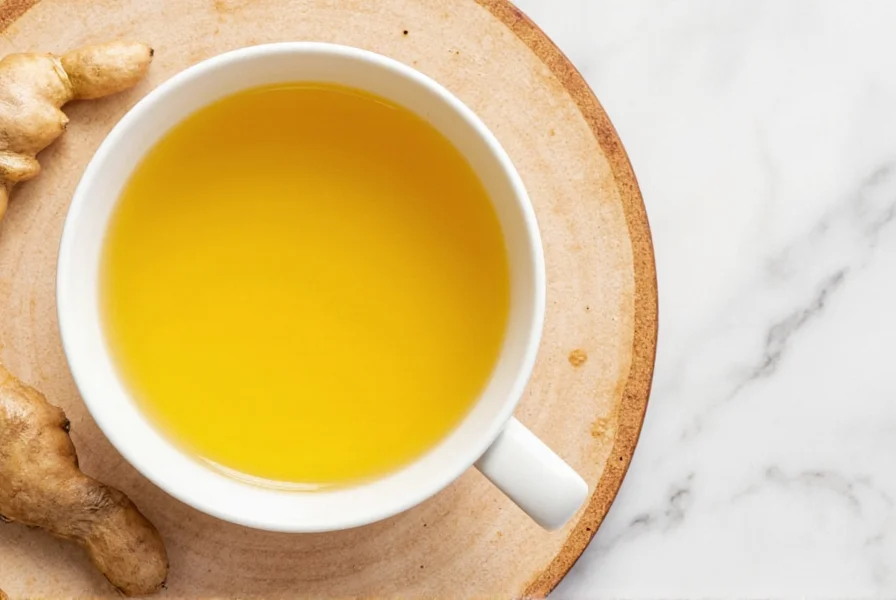Creating authentic ginger turmeric tea requires minimal ingredients but delivers maximum flavor and potential wellness benefits. This golden-hued beverage has gained popularity for its earthy taste and traditional use in various cultures. Our tested recipe ensures optimal extraction of flavors while maintaining the natural properties of these powerful roots.
The Science-Backed Benefits of Ginger and Turmeric
Research indicates both ginger and turmeric contain bioactive compounds with antioxidant properties. Gingerols in ginger may support digestion, while curcumin in turmeric shows potential anti-inflammatory effects according to numerous studies. When combined in tea form, these ingredients create a synergistic beverage that's both soothing and potentially beneficial for daily consumption. Remember that tea complements but doesn't replace medical treatment.
Complete Homemade Ginger Turmeric Tea Recipe
This easy ginger turmeric tea recipe for beginners requires basic kitchen tools and fresh ingredients. The preparation takes just 5 minutes with 15 minutes simmering time, yielding two servings of this vibrant wellness beverage.
| Prep Time | Cook Time | Total Time | Servings |
|---|---|---|---|
| 5 minutes | 15 minutes | 20 minutes | 2 |
Essential Ingredients
- 1-inch piece fresh ginger root, peeled and thinly sliced
- 1-inch piece fresh turmeric root, peeled and thinly sliced
- 2 cups filtered water
- Optional: 1 lemon slice, 1 teaspoon raw honey, or 1 cinnamon stick
Step-by-Step Preparation
- Prepare ingredients: Peel both roots using a spoon (gentler than a peeler) and slice thinly for maximum surface area
- Add sliced ginger and turmeric to a small saucepan with water
- Bring to a gentle boil, then reduce heat and simmer uncovered for 15 minutes
- Remove from heat and let steep an additional 5 minutes
- Strain through a fine mesh sieve into mugs
- Add lemon or honey if desired and stir well before serving

Variations for Different Preferences
Customize your homemade turmeric ginger tea with these simple modifications:
- Golden Milk Version: Add 1/4 teaspoon black pepper (enhances curcumin absorption) and 1/2 cup coconut milk after straining
- Citrus Boost: Include orange or lime slices instead of lemon for a different flavor profile
- Spiced Tea: Simmer with 1 cinnamon stick, 2 cardamom pods, or 1 star anise for additional warmth
- Cold Brew Method: For a refreshing summer drink, steep roots in cold water for 12 hours in the refrigerator
Storage and Serving Recommendations
Store prepared ginger turmeric tea in a sealed glass container in the refrigerator for up to 3 days. Reheat gently without boiling to preserve beneficial compounds. For optimal freshness, prepare this immune-boosting tea recipe daily using raw ingredients.
The best time to enjoy this beverage varies by personal preference. Many people drink it in the morning to support digestion, while others prefer it in the evening for its calming properties. Avoid consuming large quantities close to bedtime if the ginger affects your sleep.

Maximizing Flavor and Benefits
For the most flavorful and potentially beneficial tea, use fresh roots rather than powders when possible. The volatile oils in freshly grated ginger and turmeric provide superior taste and potentially higher concentrations of active compounds. If using dried spices, increase the amount to 1 teaspoon each and extend simmering time to 20 minutes.
Always source organic roots when available, as turmeric and ginger can absorb pesticides from soil. Thoroughly wash and peel roots before use to remove any surface contaminants while preserving the valuable compounds just beneath the skin.
Frequently Asked Questions
How often can I safely drink ginger turmeric tea?
Most adults can safely enjoy 1-2 cups daily. Consult your healthcare provider if you have gallbladder issues, are pregnant, or take blood-thinning medications, as both ingredients may interact with certain conditions and medications.
Can I use ground turmeric instead of fresh root?
Yes, substitute 1 teaspoon ground turmeric for each inch of fresh root. Increase simmering time to 20 minutes for proper extraction. Note that fresh roots provide more complex flavor and potentially higher concentrations of active compounds compared to powdered versions.
Why add black pepper to turmeric tea?
Black pepper contains piperine, which may enhance curcumin absorption by up to 2000% according to some studies. Adding just 1/8 teaspoon freshly ground black pepper significantly increases the bioavailability of turmeric's beneficial compounds without affecting flavor noticeably.
How do I store fresh ginger and turmeric roots?
Store unpeeled roots in the refrigerator's vegetable drawer inside a paper bag or wrapped in a paper towel inside a sealed container. Properly stored, they'll stay fresh for 2-3 weeks. For longer storage, freeze peeled roots in an airtight container for up to 6 months.
Is ginger turmeric tea safe for children?
Children over 2 years can typically enjoy small amounts (1/4 to 1/2 cup) of diluted ginger turmeric tea. Always consult a pediatrician before introducing new herbal beverages to children's diets, especially if they have digestive sensitivities or are taking medications.











 浙公网安备
33010002000092号
浙公网安备
33010002000092号 浙B2-20120091-4
浙B2-20120091-4